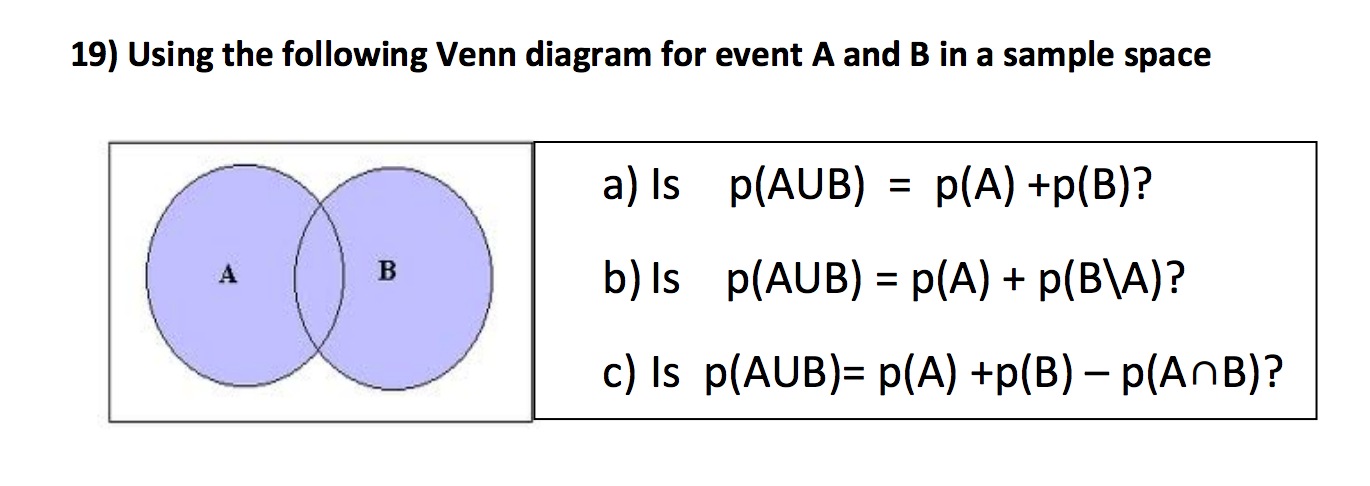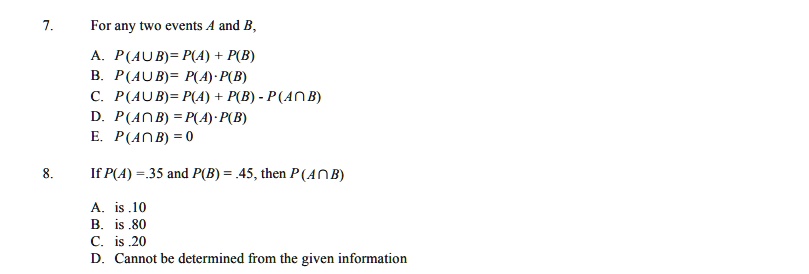
SOLVED: For any two events and B, P(AUB) = P(A) P(B) P(AUB) = P(A)- P( B) P( AUB)= P(A) P(B) - P(AOB) D. P(AOB) = P(A)- P(B) P(AnB) = 0 If P(A) =35

SOLVED: The Additive Law of Probability states that P(A U B) = P(A) + P(B) - P(A n B). Since P(A U B) < 1, we get P(A) + P(B) - P(An

Probability Rules Cheat Sheet. Basic probability rules with examples… | by rita | Data Comet | Medium
![If P(AnB) / P(B) = P(A|B) [given]then P(AuB) / P(A) OR P(AuB) / P(B) = I wanted the - Maths - Probability - 3773778 | Meritnation.com If P(AnB) / P(B) = P(A|B) [given]then P(AuB) / P(A) OR P(AuB) / P(B) = I wanted the - Maths - Probability - 3773778 | Meritnation.com](https://s3mn.mnimgs.com/img/shared/discuss_editlive/4135575/2013_02_14_17_32_39/mathmlequation6375385430541647236.png)
If P(AnB) / P(B) = P(A|B) [given]then P(AuB) / P(A) OR P(AuB) / P(B) = I wanted the - Maths - Probability - 3773778 | Meritnation.com


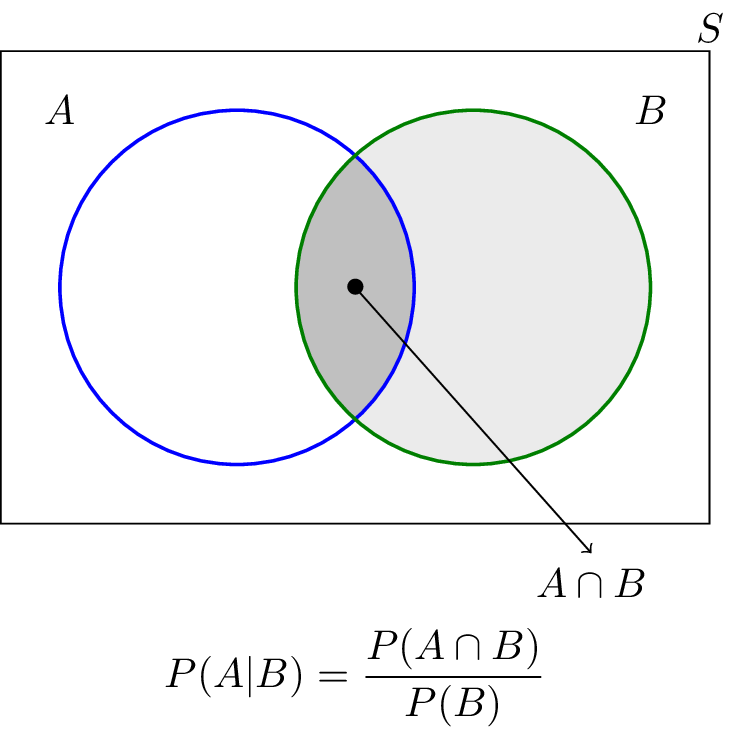


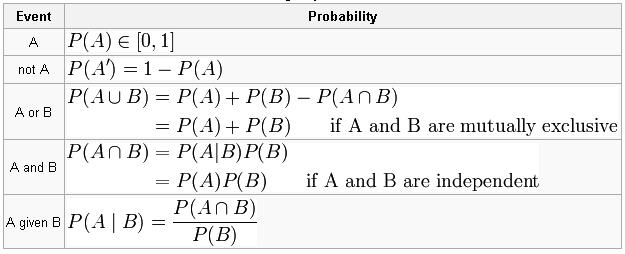
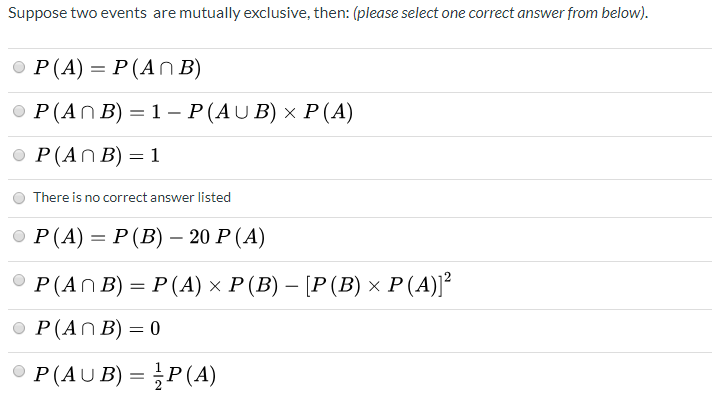


![P(A'UB)=P(A')+P(A∩B) [Probability Theory Proof] - YouTube P(A'UB)=P(A')+P(A∩B) [Probability Theory Proof] - YouTube](https://i.ytimg.com/vi/AUZDjRMbM60/maxresdefault.jpg)
